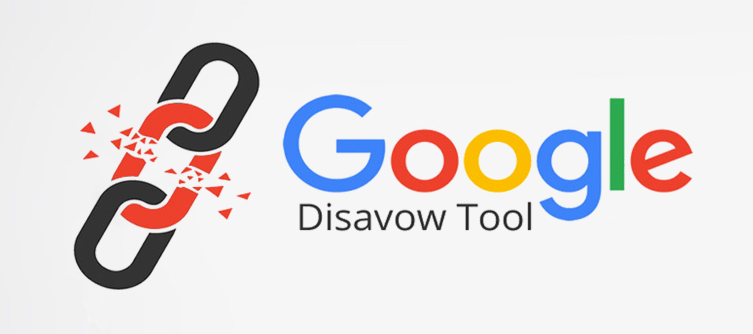
You are trying to drive as much traffic as possible to your website. More visitors mean a higher probability of selling your products and services. When you think about someone using your site in their own content, you think that it’s a great idea. However, there are such things as bad backlinks, and that can be damaging to your SEO. You could even be penalized by Google.
To protect yourself from these unhealthy backlinks, Google has created the Disavow Links Tool. The only negative aspect here is the fact that it’s not always easy to determine which links are helping and which ones are harming. There are a few methods to follow to assist you in figuring out which links to disavow and which ones to keep.
Let’s get started.
Understanding More About the Disavow Links Tool
Before you decide on going to use the Disavow Links Tool, you should first comprehend what it is and why it was made. The idea behind it is to help you get higher up in the rankings when it comes to someone searching whatever it is you are offering. The disavow tool lets you tell Google to ignore the backlinks that you don’t want them to attach to your site.
You have to send a file with the linking pages to Google Search Console for them to disavow them. That’s the easy part. Figuring out which ones to disavow is a bit trickier. Before a decision can be made on whether to submit a link, you have to first understand the tool and how Google algorithm updates have changed the level of importance for the disavow tool.
Making a Choice
The definition of a low-quality link goes something like this: one that is meant to manipulate a site’s Google ranking or one that is part of a link scheme that is a violation of Google’s Webmaster Guidelines. It is for both outgoing and incoming links to any site. In short, if the link isn’t relevant to your content or your customers, you don’t need it.
High-quality links are defined by Google as links that are earned based off of your website’s content and credibility. The more useful your information is, the more likely it’s going to be picked and linked accordingly to good backlinks.
Six types of links that you should always avoid:
- Paid links
- Private blogging networks (PBNs)
- Low-quality directories
- Comment and forum spam
- Hacked sites
- Negative SEO
Disavowing Risks
After fully comprehending which links are useful and which ones you should avoid, there are still risks associated with disavowing. Even though a link might fit all the criteria for being a bad one, it could still potentially be helping you.
Google has cautioned users interested in using the disavow tool about how much harm it can cause to their sites. The search engine already assesses links and which ones shouldn’t be trusted so, in many instances, the additional use of the tool isn’t needed. You should ultimately be 100% confident that you need to disavow any link before doing it. Most normal sites aren’t ever going to need to do this.
Users need to keep in mind as well after you disavow a link, it’s going to be a lot harder to reavow it. When you do get it reavowed, if you even can, it may not be as powerful as it was for you in the beginning. Basically, there are very few instances in when the disavow tool should be used.
When to Disavow
There are only three reasons that you should disavow a link. Manual action is without hesitation a "yes" when it comes time to clean up your links. The other two are:
- Connecting a backlink that is suspicious to a client that has admitted to paying for links before
- An increase in low-quality links that are dropping rankings quickly
Just take into consideration that Google takes care of most of the bad “spammy” linking without you having to do anything at all. Many SEO experts say that they use the tool once in a while, but only when there is something obvious that is causing problems. Going over everything with a fine-toothed comb isn’t necessary.
Identifying and Disavowing Bad Links
Now that you have learned a bit more about disavowing and its risks, you can effectively use the tool. If you already can pick out a bad link, the process is using what you know and implementing it across the backlink profile.
Side note: Google’s first recommendation in any instance is to get rid of bad links from the web before disavowing.
Performing a Backlink Audit
Using any of the free or paid SEO backlink checker tools, you can get a better understanding of whether or not a more in-depth search needs to be done on your backlink profile. The referring domains graph, the anchors cloud, and CTLDs distribution map all make the process of the audit efficient. It takes the same amount of time for a high-level link audit to complete a relative assessment regardless of the size of your backlink profile.
- Referring domains graph – identify a jump in links which could be spam related
- Anchors cloud – determines which links could be over-optimized
- CTLDs distribution map – the country code top-level domain shows an evaluation of the backlink profile based on geographic location
If you complete this audit and everything seems okay, you should be alright. However, if something is raising red flags, you’re going to want to go forward with a full link audit.
Full Link Audit
The comprehensiveness of materials is going to determine the quality of your link audit. In some cases, you may want to pull the Google Search Console for a fuller picture. Ahrefs is an efficient source in most cases. Here’s what you have to do in order:
- Go to Site Explorer
- Enter your domain
- Backlink profile
- Referring Domains
- Filter for dofollow links
- Sort by DR high to low
Low DR or unusual TLDs are your best places to start your evaluation of links. Neither one is going to be able to say for sure that a link is bad, but it’s an excellent place to start. Low DR, spammy page title and domain name, and spammy anchor text are all good reasons to disavow the link.
Spammy links should be disavowed at the root-domain level, and offending links with a trusted domain should be disavowed at the URL level. Never disavow a significant domain because of one unhealthy link.
Make a List
Create a list of links that you want to disavow through your search. Input them into an appropriate existing disavow file or download one from GSC. There is a step-by-step process available for disavowing links from your compiled list available through Google.
Watch for Changes
After the disavow has taken place, monitor your backlink profile for changes. It may take some time to see if the process was successful.
Concluding Thoughts
Post the Google Penguin update, the disavow links tool has come as a blessing in disguise for webmasters across the globe giving them more power and authority. However, monitoring and analyzing your backlink profile at regular intervals is a must when focusing on SEO.
We hope you enjoyed reading this article. Please feel free to share your thoughts below.
